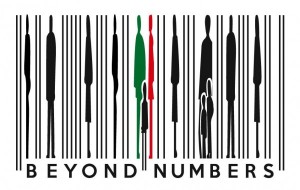How common is this strategy of using land where “others” live as a lab?
Roger Faligot in Britain’s Military Strategy in Ireland: The Kitson Experiment:
“Drawing on intelligence sources, personal knowledge and experience of Ireland, as well as contacts with the political forces involved, the author assesses the strategy of the British Army and secret services. The implementation of General Frank Kitson’s theory of low intensity operations, he argues, combined with the deployment of the SAS, Ml6’s dirty tricks department, and tough measures against political prisoners, have set a dangerous precedent. Northern Ireland has become a laboratory to experiment with new methods of controlling civilian populations; these methods include the widespread use of Computers and mass surveillance techniques, new strategies of riot control, and also psychological operations. The implications both in Ireland and elsewhere are disturbing.
Roger Faligot is a well-known Breton-French journalist and author who lived in Ireland for several years as correspondent for the French daily, Liberation. He is one of France’s leading specialists on modern Irish history. His particular interest is the operations of the great powers’ secret services and special forces, and the threat they pose to human liberty on the one hand, and national independence on the other. He writes for Le Monde Diplomatique, Paris Match, Le Marin, and the Sunday Tribune.”
Review by Cathal McGivern of Roger Faligot’s 1983 book ‘Britain’s Military Strategy in Ireland : The Kitson Experiment’. From ‘IRIS’ Magazine , 1983.
Within the British politico-military establishment , British Army General Frank Kitson pushed the view that the situation had developed to such a point that , in order to isolate the IRA , it would be necessary to take a number of immediate steps – initiate a fake peace movement, manipulate loyalist gangs and orchestrate a campaign of assassinations that would terrorise the population, and wage a massive psychological war, using the SAS and other ‘special’ units to discredit the IRA and, in the short term, to try and split them between left/right, ‘doves/hawks’, North/South and military/political axes.
The programme was too ambitious however for the William Whitelaw regime who, apart from implementing the propaganda war and an invasion of the no-go areas to engage in control of populations, adopted a more traditional plan – direct rule, brutal repression, indiscriminate internment without trial and Bloody Sunday
[youtube]https://www.youtube.com/watch?v=Aj5lSBMyUfY[/youtube].
In 1972 Frank Kitson had failed to convince his superiors of the need for a co-ordinated counter-insurgency ‘offensive’, but some of his more brutal suggestions, like the assassination campaign against Catholics, were kept in mind. And, even though on April 22nd 1972 he was returned to Britain, gradually his ideas made headway in the North, so that- to quote Roger Faligot –
“From 1975 onwards, they were totally implemented and his theories reached the top circles in the British Army, research centres, lobbies and think-tanks with NATO, and the ruling classes within Europe, beginning with West Germany, where he continued his career.”
From ‘The Guineapigs’ by John McGuffin (1974, 1981) chapter 9, Down on the Killing Floor on Kitman:
[…] As the last sixties saw the rise of formidable urban guerrilla movements such as the Tupamaros in Uruguay, the IRA in Ireland and the short-lived but politically embarrassing Weathermen in the United States, more and more government and military experts have been concentrating on the most effective ways and means for a government to control those sections of its people who are not prepared to accept central government control, be it ‘Communist’ or ‘democratic’. While would-be revolutionaries could read a wide spectrum of works from Lenin, Trotsky, Bakunin, Guevara, Mao, Giap, Fanon, Marighella and Grivas on the theory of revolution to an equally wide range of ‘do-it-yourself’ manuals on arms and explosives, from where was the dedicated British Army office to get his guidance? Certainly he could read the publications of American government officials and military ‘experts’, but what about more local works? Books like Protest and the Urban Guerrilla by Major-General Clutterbuck[9] or Subversion by Ian Greig of the Monday Club and South Vietnamese Embassy[10] would not be of any use to them, obsessed as they were with ‘international anarchist and Communist conspiracy’ and sprinkled with gross inaccuracies. Clearly a serving, experienced military man was needed. Enter Frank Kitson.
A successful Army career in Kenya (where he ‘blacked up’ and went out in the bush to form ‘pseudo-gangs’ of informers and deserters to hunt down the Mau Mau), in Malaya, in Cyprus and in Muscat and Oman led Kitson in 1969 to Oxford University where he received a grant to write his idea of the definitive British officer’s textbook – Low Intensity Operations.[11] The authorities seem to have been pleased with the book. Kitson was sent to Northern Ireland in the spring of 1970 and although only a Brigadier he was for two years, until April 1972, the Army commander in Belfast. Thus, although the youngest man in the Army to hold a Commander’s post, he was given the toughest task, and his two years there were to see many ‘innovations’ in the British Army.
oh — evidently John McGuffin (his real name was really Sean Mac A’ Phinn) was one of the guineapigs for the “innovations” ![]()
And here is some more info about John: Free Derry corner gets makeover in tribute to anarchist John McGuffin
So, not only Gaza is a lab
This “innovative approach” may now be general strategy for the UK, the US and Israel, likely of all first world countries and NATO: maintain low intensity operations/conflicts for use as a military testing/training ground.








